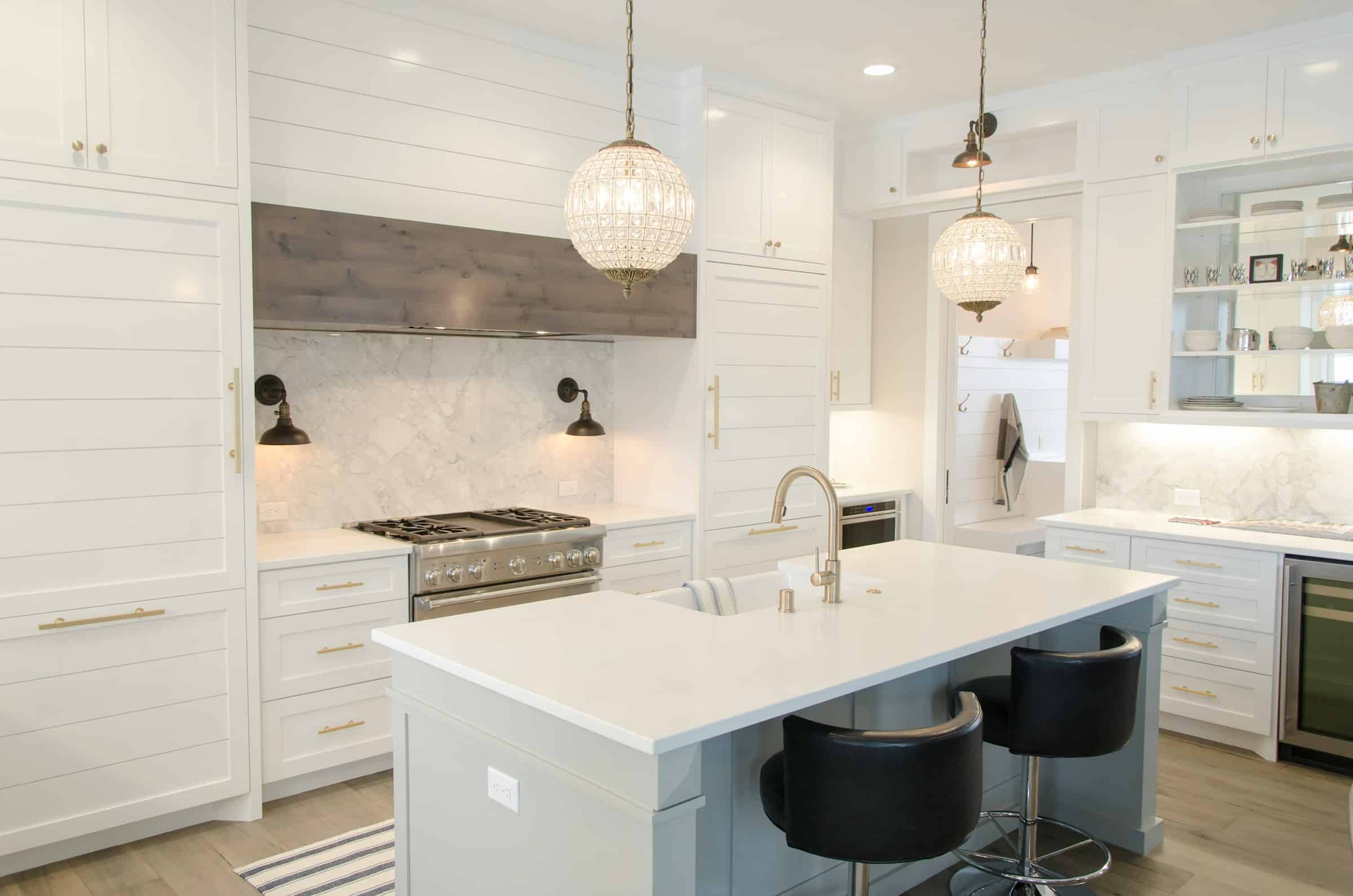What Are the Best Energy-Efficient Features for a Greenhouse?

If you’re looking to make your greenhouse more energy-efficient, you’re in the right place. Energy efficiency is not only good for the environment but for your wallet too. A well-designed, energy-efficient greenhouse allows optimal plant growth while minimizing energy usage. The key to achieving this lies in managing the primary energy inputs – light, heat, and ventilation. Let’s dig in and explore how you can best harness these inputs for a greener, more efficient greenhouse.
Efficient Lighting for Greenhouse Production
Light is the lifeblood of a greenhouse. It drives photosynthesis, the process through which plants convert sunlight into food. But not all light is created equal. The type of lighting you choose for your greenhouse can have a significant impact on both plant growth and energy consumption.
Dans le meme genre : How Can You Design a Home Theater with a Starry Ceiling for a Cinematic Atmosphere?
LED lighting has revolutionized the greenhouse industry with its efficiency and long lifespan. LEDs consume less energy than traditional lighting options like high-intensity discharge (HID) lamps and fluorescents. Besides, they emit less heat, reducing the need for cooling. With LEDs, you can also adjust the light spectrum to meet the specific needs of your plants, promoting healthier growth and higher yields.
Another innovative lighting solution is light deprivation or blackout curtains. These allow you to control the duration of light exposure, manipulating plant flowering cycles to increase production. When combined with efficient lighting like LEDs, light deprivation techniques can significantly boost your energy savings.
En parallèle : What’s the Best Way to Create a Hidden Room Behind a Bookshelf for a Home Office?
Harnessing Heat Efficiently in Greenhouses
Heat is a crucial element in a greenhouse. It drives the evaporation process, facilitating nutrient absorption and promoting plant growth. However, heating a greenhouse can consume a lot of energy, especially in colder climates. Here are a few ways to make your heating system more efficient.
Firstly, consider investing in a high-quality thermal screen. This will serve as an insulation layer, trapping warm air inside your greenhouse and thus reducing your heating needs. Some thermal screens even have light diffusing properties, helping spread light more evenly across your plants.
Under-table heating systems are another excellent way to increase heating efficiency. These systems deliver heat directly to the plants’ root zone, promoting faster growth and reducing overall energy usage. They work best when combined with a well-insulated table to prevent heat loss.
Utilizing renewable energy sources for heating can also be a sustainable option. Solar heaters, for example, harness the power of the sun to generate heat, drastically reducing your dependence on fossil fuels.
Effective Ventilation and Cooling Systems
As much as heat is essential, so too is air ventilation. Good ventilation ensures enough carbon dioxide for photosynthesis and helps control temperature, humidity, and air movement within your greenhouse. An efficient ventilation system can significantly reduce your energy consumption.
Passive ventilation systems, such as roof vents and side vents, allow hot air to escape naturally, drawing in cooler air from outside. These systems require no energy to operate, making them a cost-effective and sustainable choice for many greenhouse owners.
Active ventilation systems, on the other hand, use fans to circulate air. While these systems consume energy, choosing energy-efficient fans can help minimize your energy usage. Also, strategically placing your fans can increase air circulation, reducing the need for extra fans.
Evaporative cooling pads are another effective way to cool your greenhouse. These pads work by evaporating water into the air, lowering the temperature in the process. This method is particularly efficient in dry climates.
Efficient Watering Systems and Techniques
Finally, water is a vital resource in a greenhouse. Efficient watering systems not only save water but also energy. Drip irrigation systems, for instance, deliver water directly to the plant’s roots, reducing water waste. They also minimize water runoff, which can carry away valuable nutrients.
Rainwater collection systems are another sustainable option. These systems collect, store, and treat rainwater, reducing your dependence on municipal or well water. This lowers your water bill and allows you to make use of a free, renewable resource.
The manner in which you water your plants can also affect your water and energy usage. Watering deeply less frequently encourages deep root growth, making your plants more resilient and reducing the need for watering. Similarly, watering at night or early in the morning minimizes evaporation, allowing your plants to make the most of each drop.
By implementing these energy-efficient features, you can create a sustainable, productive greenhouse. From lighting to heating, ventilation, and watering, every aspect of your greenhouse operation can be optimized for efficiency. Remember, every little step you take towards energy efficiency is a step towards a greener, more sustainable future.
Smart Greenhouse Design and Coverings
Designing your greenhouse with energy efficiency in mind is a crucial step towards a greener operation. The structure of your greenhouse can significantly influence your energy usage. For instance, the shape and orientation of your greenhouse can help maximize light penetration and minimize heat loss.
One popular design choice is the solar greenhouse. This design leverages the natural properties of thermal mass materials like concrete or water barrels to store heat during the day and slowly release it during the night. This can help maintain a consistent temperature in your greenhouse, reducing the need for additional heating systems.
The covering material of your greenhouse also plays a big role in its energy efficiency. Single layer coverings such as glass or polycarbonate are less expensive but have poor insulation properties. On the other hand, double or triple-glazed coverings provide excellent insulation, reducing heat loss. These might be more expensive initially, but the energy savings over time can offset the initial cost.
In addition, some coverings have light diffusing properties. This means they can scatter sunlight more evenly across your plants, reducing the need for additional lighting. Choosing the right covering can therefore help you make the most of natural sunlight and conserve energy.
Monitoring and Automation for Energy Efficiency
To make your greenhouse truly energy efficient, monitoring and automation systems are key. These systems allow you to track and control the various parameters in your greenhouse such as temperature, relative humidity, and light levels.
Thermostats and humidity sensors can control your greenhouse heater, exhaust fans, and other devices based on the current conditions. This ensures that your devices are only running when needed, which can significantly reduce energy waste.
Automation systems can also control your lighting schedule, ensuring that your grow lights are only on when they need to be. This not only saves energy, but it can also improve plant health by providing them with the optimal light conditions for their growth stage.
Moreover, advanced systems even allow you to monitor and control your greenhouse remotely. This means you can manage your greenhouse energy usage from anywhere, at any time, providing you with greater flexibility and control.
Conclusion
An energy-efficient greenhouse doesn’t happen overnight. It requires careful planning, investment, and continuous monitoring. From efficient greenhouse lighting to minimizing heat loss, controlling air movement, and optimizing water usage, every aspect of your greenhouse design and operation contributes to its overall energy efficiency.
Remember, even small changes can make a big difference. By making your greenhouse more energy-efficient, not only will you reduce your carbon footprint and contribute to a more sustainable future, but you can also save significantly on your energy costs. In the end, the effort and investment put into creating an efficient greenhouse will certainly pay off, enabling year-round plant growth while minimizing environmental impact. With the right strategies and technologies in place, you can cultivate a thriving, sustainable, and energy-efficient greenhouse.
